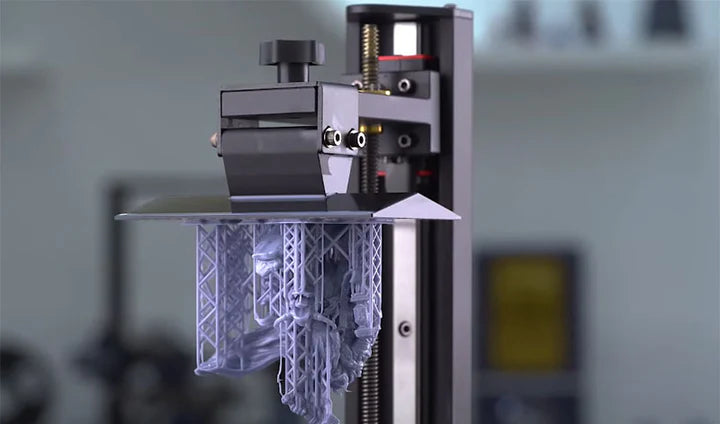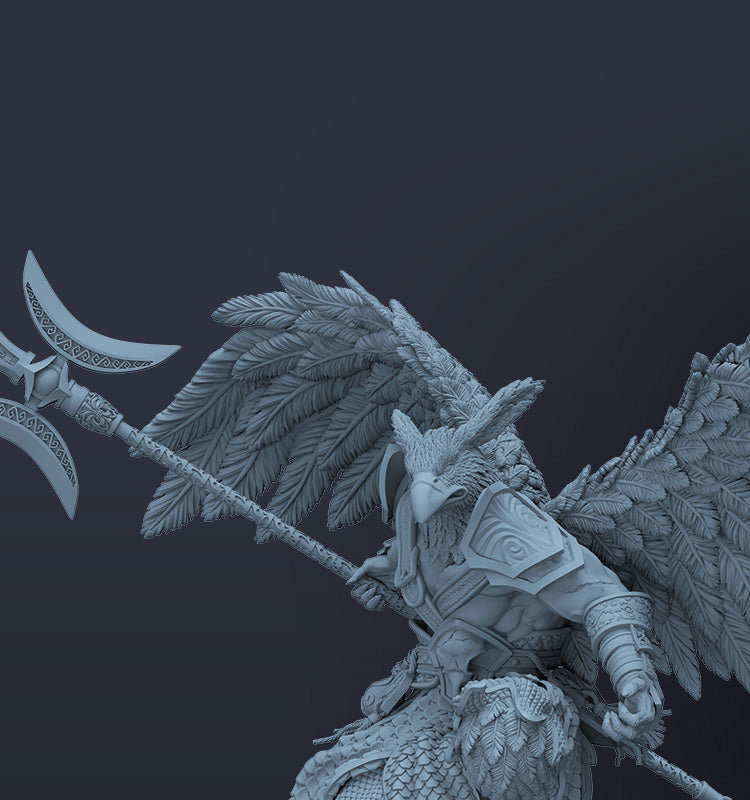What happens when you put the cover on your 3D printer and expect a perfect model to appear on the build platform, but after hours of waiting, the build platform is empty? 3D prints does not appear, the resin does not solidify, how can we solve the problem? We have collected a series of common problems in the SLA 3D printing process, try to understand and solve them!
In fact, it is not a simple matter to perform a perfect 3D printing. Even if we are fully prepared for the entry-level resin printing, we may not be able to successfully print the model. You may encounter some problems during the printing process, which are bothering you as a beginner. Knowing these information will help you deal with 3D printing problems and improve the quality of your own printed works.

Why Does SLA Print Fail?
Resin printing using SLA or MSLA technology irradiates ultraviolet light on the photosensitive resin to cure the liquid resin into a solid. One point similar to FDM printing is that the molding process of resin printing is also a trajectory. The laser or light source generates G-code according to the model slice, scanning each layer of the surface of the model slice from point to surface. The resin exposed to the light solidifies quickly, and the materials are accumulated layer by layer, and finally the entire model is printed. This is the printing process of SLA prints.
What should I do if resin printing fails? Why isn't my SLA printer printing anything? There are many reasons for the failure of 3D resin printing, for example, the problem of resin material, the screen problem of LCD-based SLA printer, the build plate is not leveled, the model does not have proper support and so on. As our knowledge of SLA printing technology and resins increases, it will be easier for us to locate problems encountered in the printing process. Of course, there are some problems that often occur in the resin printing process, such as separation between layers of the model, warping of the model adhered to the build plate, and we also provide solutions for 3D printing enthusiasts.

SLA 3D Printing Troubleshooting: 5 Common Problems of Resin Prints
Support and model separation: The printed model was attached to the printing platform, but is was found that the model was incomplete when taking the model, with parts missing or broken. This is a common troublesome problem, some machine or operation problems cause the model to fail to print. The screen and resin tank are the first things to check. If the screen is not clean, residue or dirt will prevent the machine from performing normal light curing, and the model cannot be printed completely. The resin tank also needs to be kept clean. Check whether there is any residual cured resin before use, which will definitely cause some parts to be unable to complete new curing and model printing.
Therefore, in order to avoid printing failure, we will make sure that the screen can be used normally before printing. The SLA resin printer like Anycubic Photon M3 Premium can check whether the screen can be exposed normally before printing, and is equipped with a screen protector to reduce the possibility of screen damage. Second, check that there is no uncleaned residual resin in the resin tank, and no cured resin left in the tank that will be used for printing.

Warping: If the printed model has a warped edge, there is a risk of falling off the platform before the printing is completed, which is also one of the common reasons for SLA resin printing failure. Why does 3D printing warp? As with the previous question, we first need to ensure that the screen and resin tank are clean. Second, we also need to consider some situations that may cause warping of resin printing. If the printer's light source does not emit light evenly, then different areas will be exposed inconsistently, and there is a risk of warping the edges of the model.
Model slices can also cause resin prints to fail. If you want the bottom of the model to adhere tightly to the build platform, it is best to increase the bottom exposure time. The bottom exposure time should be 10 times the normal exposure time of each layer. For example, the general model exposure time is set to 2.5s, and the bottom exposure time is best set to 25s. Finally, appropriately increasing the number of bottom layers can also increase the adhesion of the model on the build platform and reduce the possibility of model warping.

Model Holes: If there are holes on the model, you can check whether the tank is leaking, whether the screen can be exposed normally, and whether the resin has solidified before printing.
Separation occurs between the layer and the layer: The machine is not leveled or the build platform is too far from the screen, which can cause separation to occur between layers of the printed model. Check to see if your SLA printer needs re-leveling.

Surface not dry: Resin prints require cleaning. The surface of the model removed from the printing platform still has liquid resin attached to it and needs to be cleaned with 95% alcohol. If you use water or alcohol with insufficient concentration, the surface of the model will not be in an ideal state. Anycubic Wash & Cure Machine 2.0 is recommended for cleaning and curing of resin prints. The closed cleaning bucket can prevent liquid splashing, which is more safe. After cleaning and curing, the material properties of the resin can be significantly improved.





